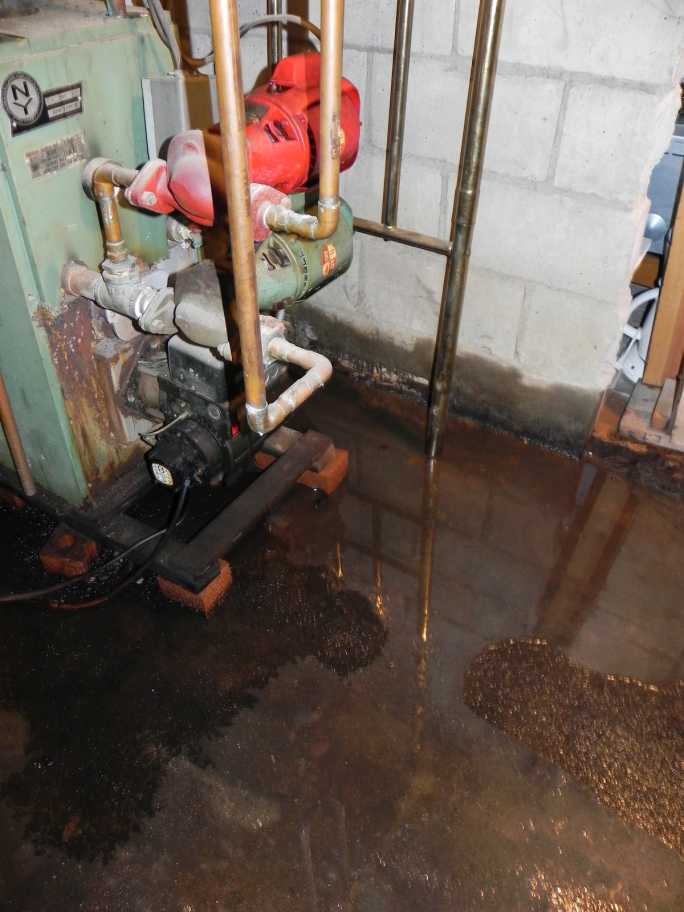Locating Hidden Tanks
Homeowners are often unaware of the presence of old heating oil tanks.
They may have used natural gas, propane or electricity to heat the house for as long as they have lived there. The fill and vent pipes of the old underground oil tank may have rusted away, been removed, or been obscured by landscaping. Additions may have been built over the oil tank.
In the 1940s and 1950s, fuel oil and kerosene became a common source of heat. Underground storage tanks were often buried beside the house. The life expectancy of these tanks is approximately 20 to 30 years. Many underground oil tanks have leaked for years while still in use. Often water enters a leaking tank and fouls the heating system.

An underground oil tank located adjacent to a foundation wall may leak into basement areas. Soil cleanup will be required because of the health risks.
In response, the leaking oil storage tank could have been replaced by a new tank buried nearby or by an aboveground oil tank. If natural gas was available, the heating system may have been replaced. The now inactive underground tank was often left in the ground to continue leaking the heating oil remaining in it.
Clues to the presence of an underground oil tank.
- Home was built in the 1960s or earlier.
- Natural gas service was established years after the house was built.
- An aboveground storage tank is present (often installed to replace a leaking underground tank.
- Copper fuel lines in the basement or crawlspace (often cut off at the wall).
- Oil staining or odor in basement or crawlspace walls.
Cedar Rock also uses a metal detector and probing rod during site inspections to help find hidden underground oil tanks.
It is very common for there to be no signs that an underground heating oil tank has leaked. To protect your investment, please call us at (336) 684-2734 or use our contact form to set up a site inspection.
When the tank has already been removed.
Remember that soil contamination is the issue and not the leaking tank itself.
The pictures below detail the discovery of contaminated soil from an underground oil tank leak on a property where the tank had been removed. Prior to Cedar Rock’s site inspection, the presence of soil contamination caused by an underground oil tank was not suspected. In fact, the home owner was reportedly told by the person who removed the tank that the tank had not leaked. The active aboveground storage tank was installed as a replacement for the underground tank. No trace of an underground tank was detected during a metal detector sweep of the property.
In this case, the buyer was not satisfied with purchasing a property with a Notice of Residual Petroleum and required excavation of the contaminated soil. During the excavation, soil contamination was found to extend a significant distance in all directions.

Two pairs of copper fuel lines were observed in the the crawlspace. One set was connected to the aboveground tank. The other set had been severed at the foundation wall and would have been connected to the former underground oil tank.

Cedar Rock exposed the severed lines outside the foundation wall and a metal detector was used to trace the copper fuel lines to their end several feet out into the back yard where a slightly depressed area was observed.

The soil was then sampled with a hand auger. The bluish gray discoloration in the soil is typical of petroleum contamination, and the soil also had a strong petroleum odor. Note that the probing rod was easily pushed into the ground to its full depth indicating that the soil had been disturbed.

Excavation of contaminated soil. The discoloration in the soil is a result of petroleum contamination and shows the approximate depth of the tank that was removed.

